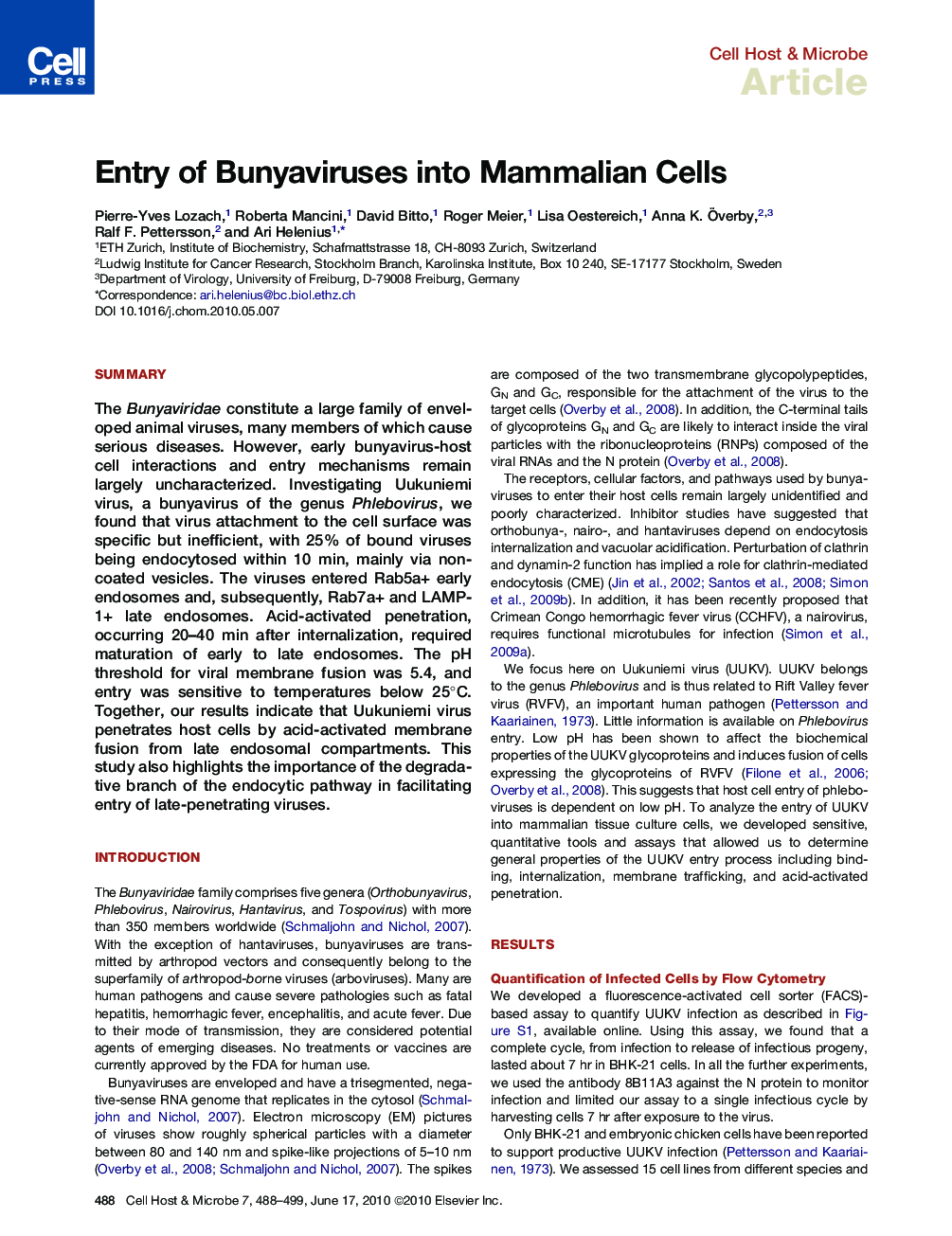| کد مقاله | کد نشریه | سال انتشار | مقاله انگلیسی | نسخه تمام متن |
|---|---|---|---|---|
| 4361405 | 1301379 | 2010 | 12 صفحه PDF | دانلود رایگان |

SummaryThe Bunyaviridae constitute a large family of enveloped animal viruses, many members of which cause serious diseases. However, early bunyavirus-host cell interactions and entry mechanisms remain largely uncharacterized. Investigating Uukuniemi virus, a bunyavirus of the genus Phlebovirus, we found that virus attachment to the cell surface was specific but inefficient, with 25% of bound viruses being endocytosed within 10 min, mainly via noncoated vesicles. The viruses entered Rab5a+ early endosomes and, subsequently, Rab7a+ and LAMP-1+ late endosomes. Acid-activated penetration, occurring 20–40 min after internalization, required maturation of early to late endosomes. The pH threshold for viral membrane fusion was 5.4, and entry was sensitive to temperatures below 25°C. Together, our results indicate that Uukuniemi virus penetrates host cells by acid-activated membrane fusion from late endosomal compartments. This study also highlights the importance of the degradative branch of the endocytic pathway in facilitating entry of late-penetrating viruses.
Graphical AbstractFigure optionsDownload high-quality image (309 K)Download as PowerPoint slideHighlights
► Endocytosis of the bunyavirus Uukuniemi is mainly clathrin independent
► After uptake, the virus particles are routed via early to late endosomes
► Virus penetration occurs by acid-activated membrane fusion from late endosomes
Journal: - Volume 7, Issue 6, 17 June 2010, Pages 488–499